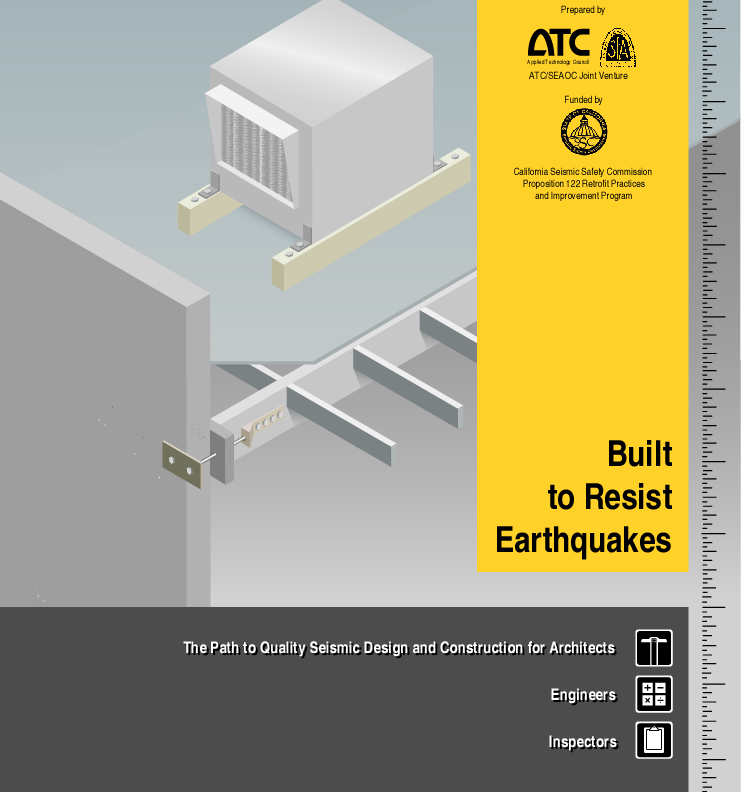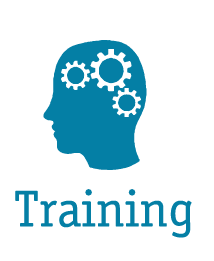SELECTED TRAINING MATERIALS FROM THE ATC/SEAOC 'BUILT TO RESIST EARTHQUAKES' TRAINING CURRICULUM
 Built to Resist Earthquakes, a training curriculum to improve the quality of the seismic design and construction of buildings, has been developed to serve as a resource for continuing education of architects, engineers, building officials and inspectors. Bound in a three-ring notebook, the curriculum consists of several hundred pages of training materials pertaining to the seismic design and retrofit of (1) wood-frame buildings, (2) concrete and masonry construction, and (3) nonstructural components. The curriculum was published in 1999 by the joint venture partnership of the Applied Technology Council (ATC) and the Structural Engineers Association of California (SEAOC).
Built to Resist Earthquakes, a training curriculum to improve the quality of the seismic design and construction of buildings, has been developed to serve as a resource for continuing education of architects, engineers, building officials and inspectors. Bound in a three-ring notebook, the curriculum consists of several hundred pages of training materials pertaining to the seismic design and retrofit of (1) wood-frame buildings, (2) concrete and masonry construction, and (3) nonstructural components. The curriculum was published in 1999 by the joint venture partnership of the Applied Technology Council (ATC) and the Structural Engineers Association of California (SEAOC).
The curriculum contains:
- Detailed, illustrated, instructional material (lessons) describing how to improve the quality of seismic design, inspection, construction and retrofit. A detailed description of the lesson structure can be downloaded as a pdf file;
- Six multi-part, two-color Briefing Papers -- concise, easy-to-read, summary overviews of important issues and topics intended to facilitate improvement in the quality of seismic design, inspection, and construction; and
- Job Aids -- checklists and other tools to facilitate job performance, including construction observation, special inspection, and quality assurance procedures.
Copies of the curriculum Briefing Papers and Job Aids can be downloaded as pdf files.
John Henry's curriculum presentations may also be downloaded as PowerPoint files.
Printed copies of the ATC/SEAOC Joint Venture Training Curriculum can be purchased in our online store.



